|
Getting your Trinity Audio player ready...
|
The word “CUT” has a different meaning. It is synonymous with “the making” a combination of operations (Cleaving, Sawing Bruting, Polishing) resulting in the shape of a diamond. These may have different forms and various “styles”: Brilliant Cut, Single Cut, Rose Cut, Mixed,…
Many Gemologists consider cut to be the most important of the 4 C’s (Clarity, Cut, Color, and Carat). If a diamond is not cut to good proportions reflected light will be lost through the side or bottom, resulting in a dull and less brilliant appearance. When a diamond is cut from good to ideal proportions, the light will reflect within the diamond crystal and disperse through the top, resulting in a display of brilliance and fire.
Cut – The Making
The only one of the 4C’s that is within our control is a diamond’s cut. The cut is the result of the worker’s skill in transforming a rough diamond into a polished diamond.
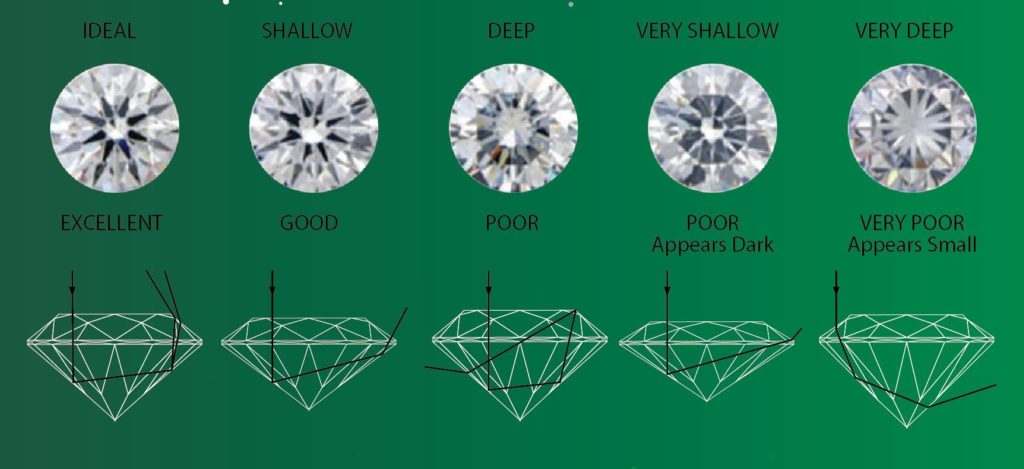
Ideal Cut Proportion
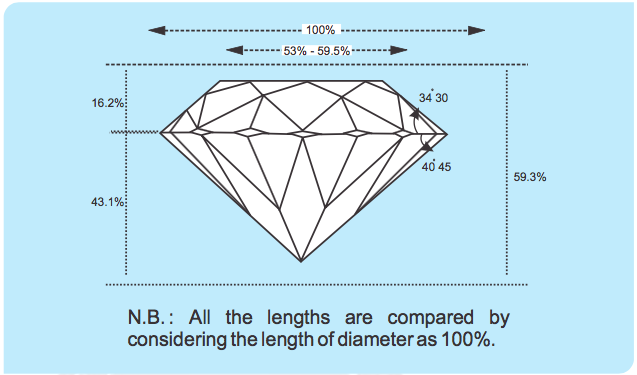
Diamond must be cut according to well balanced and harmonious proportions, in order to obtain their maximum existence. The ideal round brilliant is measured in percent, in accordance with its average diameter. The ideal round brilliant, recommended by Marcel Tolkowsky (Diamond Design, 1919) has the following propositions:

The ideal girdle has a thickness between 1 and 4% of the average girdle diameter. The total depth, which is the sum of the crown height, girdle thickness and pavilion depth various from 60.3 to 63.3%

The shape of a diamond is generally related to the angles of the facets, which boils down to a combination of certain proportions.
The ideal angles are: (1) 34.1/20 for the crown (angle formed by the bezel facets and the girdle plane) (2) 40.3/40 for the pavilion (angle formed by the pavilion facets and griddle plane)
Evaluating the Cut
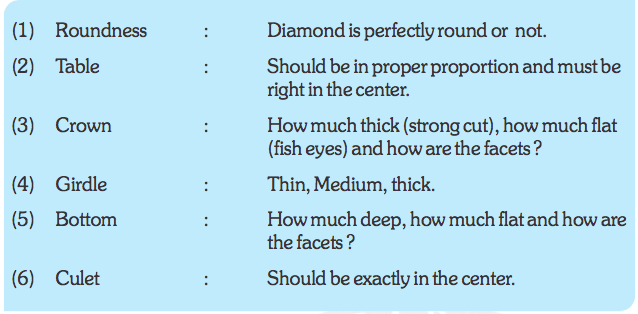
The Difference Between Cut and Shape
The first thing to know is that the term “cut” is used in two different ways. Many people use “cut” when describing a diamond’s shape, for instance, an “emerald-cut engagement ring”. Though the term is widely used in this way, it is not really the correct usage. The true definition of cut is not the shape of the diamond, but rather the proportion, polish, and symmetry of the diamond.
- Diamond-Cut Shape – The shape of the diamond. There are ten main types of cut shapes (Round, Oval, Emerald, Radiant, Asscher, Cushion, Heart, Princess, Marquise, and Pear cut)
- Diamond-Cut – A diamond’s proportions, polish, and symmetry.
Diamond-Cut Grade
The Cut Grade of a diamond directly impacts its beauty; if a diamond is designed, cut, and finished properly, it will have a much more desirable appearance, even when compared to diamonds of higher color and clarity grades.
- Excellent: Cut to a high-quality polish and symmetry, Excellent cut diamonds will reflect all light as brilliance and fire.
- Very Good: Very Good cut diamonds reflects nearly all light that enters. Less expensive than an Excellent cut grade, it still displays a good amount of sparkle.
- Good: An economical choice for diamond shoppers, a Good cut reflects most light that enters it, offering beauty at an attractive value.
- Fair: A diamond with a Fair cut grade generates an average amount of brilliance. We advise that you choose a diamond with at least a Good cut grade if possible.
- Poor: Less than average amount of brilliance, sometimes even dead or almost dead luster, major problems regarding diamond proportion, polish, and symmetry will be easily found.
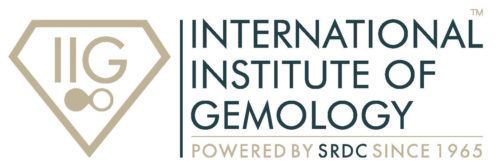
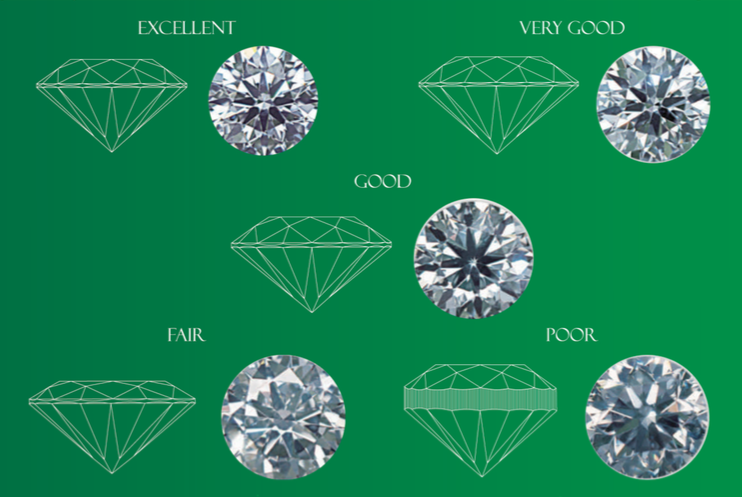
It’s fantastic that you are getting ideas from
this article as well as from our discussion made at this time.
I quite like reading through a post that will make people think.
Also, thanks for allowing me to comment!